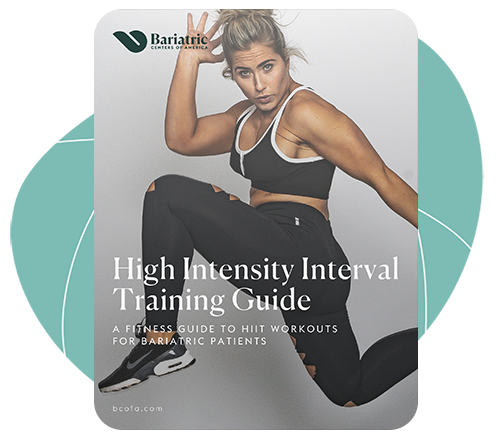
Your heart is one of the most important muscles in your body. Although many people don’t look at it as a muscle because they can not artificially see it. Following heart rate zone training during exercise is a great “muscle building” attribute you can bring to the table. Simply put, your heart rate is the maximum beats per minute your heart muscle can achieve.
Heart rate zone training consists of using your heart rate to measure the intensity of your workouts. When working towards a fitness goal, three training variables can be manipulated: frequency of training, duration of the training, or intensity of training. Exercise intensity is the most important when it comes to performance, weight loss, cardiovascular fitness, and health.
Intensity is measured based on your heart rate. Therefore it is important to have an understanding of your heart rate training zones that will help you achieve your long-term fitness goals, whether it be fat burning or increasing endurance.
Benefits of Measuring Your Heart Rate
Measuring your heart rate is one of the best and most practical methods of tracking your performance and perceived exertion because all it requires is a heart rate monitor or a smartwatch. Just like when you work out your biceps, when you exercise your heart muscle, the stronger it will become. It is beneficial to track your heart rate when training and when at rest, to understand your heart health better. Your active and resting heart rate is also a reflection of blood flow and myocardial oxygen consumption (how much energy your heart uses).
Finally, measuring your heart rate is important to training based on your needs—individualized training. As we will discuss in detail below, you should stay within the heart rate zones calculated based on your age. When you track and measure your heartbeats per minute, you can have a better understanding of your workout intensity and, therefore, train based on your level of fitness.
Heart Rate Zone Training
As an easy way to quantify energy systems, exercise physiologists and coaches have developed what is now known as heart rate training zones: roughly defined ranges of heart rates (as a percent of max) where certain adaptations can be expected to occur. The goals of any workout can be expressed in terms of a training zone. – Brady Holmer, HVMN
Measuring Heart Rate
When measuring your heart rate, you first want to calculate your max heart rate, which is defined as 220 minus your age. My max heart rate is 191, which was found by subtracting my age (29) from 220.

Finding Your Range
Most people want to stay within their target heart rate, ranging between 70 and 85 percent of their maximum heart rate, especially when training based on intensity. It is important to note, though, that this equation does not include individual characteristics such as gender, current exercise habits, and genetics. Therefore, if you are new to working out, you will want to consult a doctor or exercise physiologist to learn more about healthy heart rate zones based on your health history.
“Why use zones to train? Athletes don’t (and shouldn’t) train at the same intensity from day to day, workout to workout. Manipulating the most important variable (intensity) is crucial to boost your fitness level over time, avoid a plateau, and stay healthy.”
MHR: Max Heart Rate
 Low intensity 50-70% MHR
Low intensity 50-70% MHR
This is the “I can walk and talk to you all day long” heart rate training zone. People who go on brisk walks (I like going with my four-legged babies) are in this zone. I recommend warming up and cooling down in this zone, as training at this amount increases blood flow and circulation to your muscles.
Moderate intensity 70-80% MHR
Most of your fitness training should take place in this zone. When training in this heart rate zone, your breathing will be harder, and it will be a bit tougher to have long, drawn-out conversations with your workout partner. Overall though, this zone should still be reasonably relaxed, especially compared to the high-intensity zone.
You should be able to sustain this moderate-intensity zone for more extended interval periods. Exercises in this zone include weight lifting (30-60 seconds rest between each set), running, cycling, elliptical, or swimming at a firm pace in the moderate-intensity zone. For most, your body uses equal amounts of energy from fats and carbohydrates when training in this zone.
High-intensity 80-90% MHR
When in the high-intensity zone, you’re talking has now turned into one-worded “yes, or no’s.” Lactic acid is your energy source now. The body makes lactic acid when it is low in oxygen and needs to convert glucose (sugar) into energy. You’ll be able to go harder for longer as your body reutilizes lactic acid to give you the extra push.
Training at 80-90% of your heart rate can increase endurance and burn calories faster than during lower intensity exercise. This zone is the upper limit of your physical capacity and includes exercises like HIIT (high-intensity interval training). Say hello to those burning muscles. By working through the burn, you will become faster and stronger.

Maximum effort 90-100% MHR
Alert, alert, you’re in the “red-zone.” Your body can only sustain this level of effort for a short time – for example, when you’re in an all-out sprint. When you first start working out, you may not be able to go hard enough to get into this zone, which is okay because you’ll get there over time.
If you’re in my group fitness class, you’re likely at your maximum effort while doing suicides.
Resting Heart Rate
What about resting heart rate (like when we are sitting down at our computer writing blogs)? Again, your heart is a muscle. So, when your heart has to do less work to pump blood throughout your body, the more efficient it is. What’s the saying…”smarter not harder”? The fitter you become, the lower your resting heart rate will become. Athletes typically have a resting heart rate between 40 to 60 beats per minute (bpm).
Conclusion
Most professional athletes follow an 80/20 rule when it comes to training in the different heart rate zones. Only about 20% of your training sessions should be spent in the high-intensity zone, while most of your workouts should be centered around moderate and low-intensity workouts.
When starting a fitness routine, it is important to look at these zones as suggestions and not guidelines. Although they are great to track and measure your heart rate when training based on goals, every individual is different. Especially if you are new to fitness, don’t stress too much about achieving those heart rate zones. I encourage you to consult your doctor or an exercise physiologist before you begin training. I want you all to start thinking about exercising not just for that summer bod, but for that glorious heart of yours.












